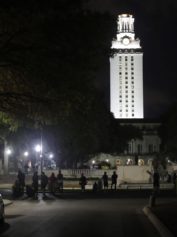
The U.S. Capitol’s Statuary Hall Collection features 100 statues. (Image courtesy of the Architect of the Capitol)
With the recent unrest in Charlottesville, Va., Confederate monuments have once again become the focal points of contention between many Americans.
Much of the controversy surrounding the historic statues has centered on their presence in cities and states across the country. But what some people fail to notice is that monuments honoring Confederate leaders are well represented at the government level, too. In fact, the U.S. Capitol has a dozen of them.
Records kept by the Architect of the Capitol show that the National Statuary Hall Collection contains three times as many statues of Confederate figures and politicians as it does statues honoring Black Americans, The Washington Post reported.
The Statuary Hall Collection, created by an act of Congress in 1864, features 100 statues (two from each state) depicting presidents, entertainers, soldiers and teachers. Each state is allowed to commemorate “deceased persons who’ve been citizens thereof, and illustrious for their historic renown or for distinguished civic or military services,” according to the paper. State legislatures and governors are tasked with deciding who gets memorialized.
The newspaper noted that 12 of the statues commemorate individuals who either fought for the Confederacy or were involved in Confederate politics. Meanwhile, there’s not a single Black American represented in the Capitol’s Statuary Hall Collection.
Federal lawmakers have made efforts to fix the issue in recent decades but were legally unable to add any statues to the official collection; that right is reserved for the states. So, Congress commissioned its own artwork honoring African-Americans to be featured alongside the statues in the Hall.
In 1986, a bust of Martin Luther King Jr. was the first work to be added, The Washington Post noted. However, it wasn’t until the Obama administration that Congress created additional statues depicting African-Americans. A bust honoring Sojourner Truth was placed in Emancipation Hall at the Capitol’s visitor center in 2009.
Full-sized statues of Black figures finally came in 2013, when bronzes of Frederick Douglass and Rosa Parks were added to the hall as well.
“For too long, the Capitol collection of statues and busts failed to include courageous African-Americans who inspired and led some of the most important movements in our nation’s history,” said Senate Minority Leader Chuck Schumer at the commemoration ceremony of the Douglass statue. “The installation of this statue in a place named Emancipation Hall is just one step toward correcting that glaring omission.”
In contrast, statues honoring Confederate soldiers and politicians have graced Statuary Hall for more than 100 years. They include the likenesses of Gen. Robert E. Lee, commander of the Northern Army of Virginia, and Jefferson Davis, the president of the confederacy, among others, according to the newspaper.
Two states, Mississippi and South Carolina, are represented in the statuary collection exclusively by Confederate leaders. Congress has since passed a law allowing states to update their statuary representations, and some Southern states have moved to do so. For instance, in 2009, Alabama Confederate officer Jabez Curry’s statue was replaced by Helen Keller, The Washington Post reported.
Despite these changes and additions, some Americans feel that African-Americans should be commemorated in the official Statuary Hall collection, rather than relegated to its margins.


